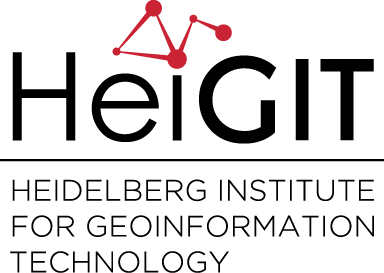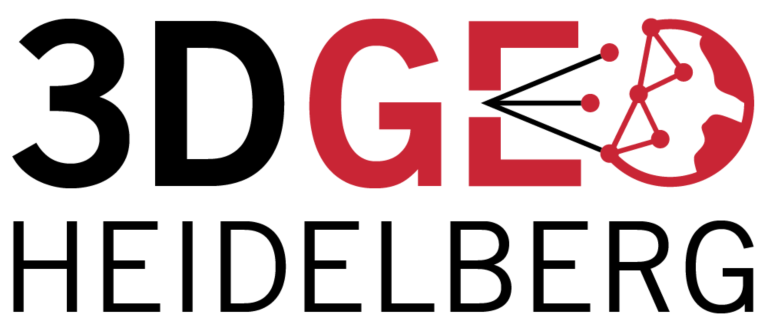Tag: Lidar
-
Follow up: Final version of study “Characterizing tufa barrages in relation to channel bed morphology in a small karstic river by airborne LiDAR topo-bathymetry” available online
The final paginated version of the paper summing up our study “Characterizing tufa barrages in relation to channel bed morphology in a small karstic river by airborne LiDAR topo-bathymetry” (see initial post) can now be accessed by everyone via https://authors.elsevier.com/a/1UDhp3qItqy7- for free till February 04, 2017. Profe, J., Höfle, B., Hämmerle, M., Steinbacher, F., Yang,…
-
Results of study “Direct derivation of maize plant and crop height from low-cost time-of-flight camera measurements” published
In agriculture, information about the spatial distribution of crop height is valuable for applications such as biomass and yield estimation, or increasing field work efficiency in terms of fertilizing, applying pesticides, irrigation, etc. Established methods for capturing crop height often comprise restrictions in terms of cost and time efficiency, flexibility, and temporal and spatial resolution…
-
Study published: “Characterizing tufa barrages in relation to channel bed morphology in a small karstic river by airborne LiDAR topo-bathymetry”
We are pleased to announce the publication of the study “Characterizing tufa barrages in relation to channel bed morphology in a small karstic river by airborne LiDAR topo-bathymetry” in the Proceedings of the Geologists’ Association. The manuscript is already available online (http://dx.doi.org/10.1016/j.pgeola.2016.10.004) The motivation of the study is the high value of freshwater tufas in…
-
Two new tools provided on GITHub: HELIOS (LiDAR simulator), VOSTOK (3D solar potential calculation)
On the GIScience GITHub, two new tools are now available: The Heidelberg LiDAR Operations Simulator HELIOS is a software package for interactive real-time simulation and visualization of terrestrial, mobile and airborne laser scanning surveys. Own virtual scenes can be generated by combining for example terrain models with other objects (buildings, vegetation). Own scan positions as…
-
Apply now: ISPRS Summer School of Alpine Research 2017: Close Range Sensing Techniques in Alpine Terrain
Download flyer (PDF) Objectives The main goal of the Joint Summer School 2017 is to provide participants with innovative practical and methodological skills to characterise complex terrain and objects using close-, near range and remote sensing techniques. The Summer School will be the second edition after a successful first version in 2015. Teaching Methods Theoretical…
-
ISPRS Innsbruck Summer School of Alpine Research 2017 – Close Range Sensing Techniques in Alpine Terrain
Do you want to learn a lot about geodata acquisition and sensing, in a beautiful and challenging high mountain environment, enjoy the evenings with colleagues and professors above 2000m altitude? If yes, here you can find the answer: Join our summer school in 2017 (16-22 July)! https://www.uibk.ac.at/geographie/summerschool (Flyer) This summer school is designed for any…
-
Beyond 3-D: The New Spectrum of LiDAR Applications for Earth and Ecological Sciences
Capturing and quantifying the world in three dimensions (x,y,z) using light detection and ranging (lidar) technology drives fundamental advances in the Earth and Ecological Sciences (EES). However, additional lidar dimensions offer the possibility to transcend basic 3-D mapping capabilities, including i) the physical time (t) dimension from repeat lidar acquisition and ii) laser return intensity…
-
3D data acquisition in the Ötztal Alps – Exploring 3D GIScience on the “Monster of Rock”
As part of the practical field training “3D Geodatenerfassung im Hochgebirge (Ötztal), 31 July – 06 August”, the rock glacier “Äußeres Hochebenenkar” (42 ha), located in the Ötztal Alps in an elevation of 2,630-2,800 m a.s.l., was explored by 16 students under the direction of Bernhard Höfle, Stefan Hecht and Martin Hämmerle. With the help…
-
3D-TAIGER Summer School 2016 in Heidelberg
From 5-7 September 2016 the GIScience Heidelberg Group hosted a summer school within the collaboration and exchange project 3D-TAIGER (’Multi-Source 3D Geoinformation Extraction for Improved Management of Forest and Natural Hazards – Collaboration between TAIwan and GERmany’). The summer school is a follow-up of the kickoff meeting in Tainan in April this year. The first…
-
Workshop on Multi-Source 3D Geoinformation Extraction for Improved Management of Forest and Natural Hazards (5 Sep 2016, 9-17h)
Time: Monday, 5 September 2016, 09:00 – 17:00h Venue: Seminar Room 5.104, Im Neuenheimer Feld 205, Mathematikon No fees: Attendance of the scientific program is without costs. Objective and Scope The main objective of this public workshop is to bring together experts from Geosciences and 3D Earth observation / Geomatics, from academia and industry, as…
-
Impressions from ISPRS Congress 2016 in Prague
As we mentioned earlier, we contributed four papers to the ISPRS congress and participated in the CATCON contest for brilliant Computer Assisted Teaching tools. Our new LiDAR Simulator called HELIOS developed by Sebastian Bechtold received a lot of attention. You can also find us in this video of congress day 3. Our young researchers Katharina,…
-
Four contributions from GIScience Heidelberg at the ISPRS Congress in Prague
The LiDAR Research Group (LRG) of GIScience Heidelberg is contributing novel approaches for geological outcrop characterization, LiDAR simulation, tree classification as well as education in close-range sensing. You are kindly invited to visit our presentations at the ISPRS Congress 2016 in Prague. Furthermore our new HELIOS LiDAR Simulator will participate in the CATCON contest for…


